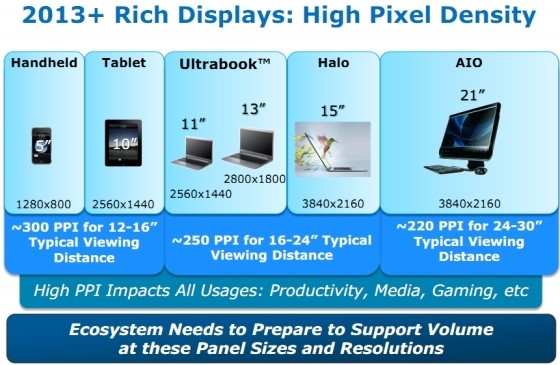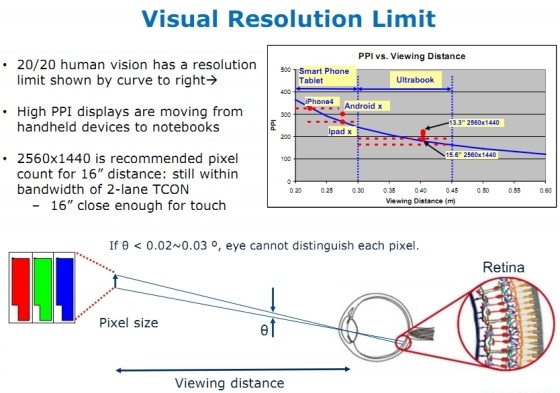Can't tolerate your laptop's paltry resolution after using one of Apple's "retina" displays? Pretty soon you won't have to, according to Intel slides published by Liliputing. The chipmaker believes devices with high pixel densities will wash ashore as early as next year, offering 220-300 PPI on virtually every display-bearing gadget in your arsenal.
It's predicted that handheld devices with viewing distances of 12 to 16 inches will have a pixel density of about 300 PPI, which works out to 1280x800 on 5-inch smartphones and 2560x1440 on 10-inch tablets. For reference, the iPhone 4 and 4S have a resolution of 960x640 (326 PPI) and the third-gen iPad's screen is 2048x1536 (264 PPI).

Systems typically viewed at 16 to 24 inches will supposedly offer a pixel density of around 250 PPI. This will include 11-inch Ultrabooks with a resolution of 2560x1440 and 13-inch Ultrabooks with 2800x1800 screens. Meanwhile, 15-inch notebooks and 21-inch all-in-ones viewed from 24 to 30 inches away will have a resolution of 3840x2160.
Intel doesn't just want to crank up resolutions, however. As part of the increasing demand for higher quality displays, the company believes it's necessary to address all aspects of the technology, including good viewing angles, a high color gamut, cheaper touchscreens, improved power efficiency, as well as thinner and lighter panels.

Liliputing notes that increasing pixel densities is partly hinged on support from Windows and other OSes. Cramming 3840x2160 pixels into a 15-inch screen would make things like text too small for comfortable viewing. To fix that, you'd have to adjust your platform's DPI, but that often produces subpar graphics -- at least on current versions of Windows, anyway. Windows 8 is expected to scale better, especially in the touch-oriented Metro interface.